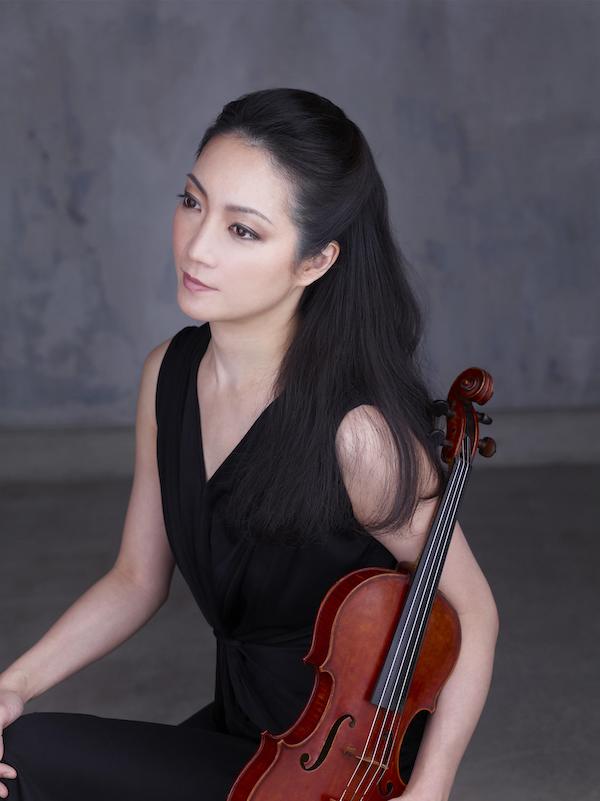Noseda, NSO make a brilliant showing as rest of Asian tour gets canceled

The National Symphony Orchestra announced Thursday evening that it has canceled the remaining dates of its tour to Asia, which was to begin next week. Rapidly changing developments in the spread of the coronavirus (now known as COVID-19) have forced the NSO to bail on the remaining Japan dates, its first international performances under music director Gianandrea Noseda.
Prime Minister Shinzo Abe has recommended that all Japanese theaters be closed and major cultural events suspended throughout Japan for the next two weeks. The NSO tour, scheduled for March 3-12, unfortunately coincided with this suspension.
“My heart is filled with sorrow about the cancellation of the National Symphony Orchestra’s tour of Japan,” Noseda said in an NSO press release. “We have been preparing musically for this tour for months, and planning for years. At this time the most important thing is to focus on everyone’s health and we send our best wishes to everyone.”
The news became public just after the NSO performance of Thursday night in the Kennedy Center Concert Hall, a program containing the remaining music for the tour to Japan. With the coronavirus spreading quickly in Japan, the likelihood of the tour going ahead next month had already seemed in doubt, but that possibility did not dampen the enthusiasm of the NSO or Noseda.
Four of the five concerts in Japan were to have opened with the sole American work planned for the tour, Samuel Barber’s First Essay for Orchestra. Noseda has described Barber as “a composer who is very close to me,” which may explain this unconventional choice for a concert opener.
Written in 1938, for Arturo Toscanini to conduct with the newly formed NBC Symphony Orchestra, the piece has intense melodic appeal in an often meditative wrapping. (Aaron Copland conducted the NSO’s last performance of the piece, back in 1977.)
The work opened to the somber hum of viola, cellos, and double-basses. As other instruments joined, Noseda’s frantic gestures seemed intent on wringing every ounce of expressive force from his musicians. The approach was at odds with the abstract, intellectual nature of the piece in some ways, but it was hard to argue with the polished playing on display, especially the sheen of the three trumpets and the woodwinds and piano skittering rapidly.

Akiko Suwanai, who was to have accompanied the NSO on this tour, took the stage for a blockbuster performance of Tchaikovsky’s Violin Concerto. The Japanese violinist, who won the Tchaikovsky Competition in 1990 at the tender age of 18, has not been heard in Washington in a long time. She drew forth a searing tone from the 1714 Delfino Stradivarius, an instrument matched beautifully to her bold melodic flair.
Noseda paced the NSO to his soloist’s free application of rubato, layering the second theme of the first movement with syrup. The NSO blazed forth in the tutti sections, adding fire to the often more reflective stance of Suwanai. Her double-stop passages in the development section were brilliantly delineated, and the cadenza featured assured technical panache, for example in the many returns to the same high harmonic note.
Suwanai’s soulful, dark-hued approach to the folk music-like sections of the slow movement inspired similar playing in the clarinet and flute solos. With natural ease the finale grew out of the slow movement, the biting edge of Suwanai’s tone distinguishing the main theme. What a shame that Japanese audiences will not hear this triumphant interpretation, taken at a daredevil tempo, at least not this year. Suwanai responded to generous ovations with a demure Bach encore, the Andante movement of the second solo violin sonata.
The second half of the program consisted of music not planned for the tour. (The NSO was to have played Dvořák’s Ninth Symphony instead, as it will for the Friday performance of these concerts only.) In Stravinsky’s arrangement of music from Tchaikovsky’s The Sleeping Beauty, Noseda featured his principal flutist and clarinetist in charming solos. Concertmaster Nurit Bar-Josef then purred and fluttered through the demanding violin solo of the “Entr’Acte.”
For a conclusion Noseda brought Stravinsky’s energetic Symphony in Three Movements back to the NSO for the first time since 1986. In the first movement the Italian conductor went for the jugular, lunging for every sharp articulation and detail of rhythmic clarity. The second movement loped along more gently, with delicate sounds from the harp. The third movement, which sounded brilliantly drilled, featured lockstep coordination across the orchestra, with astounding bassoon solos around the midpoint of the movement.
The program will be repeated 8 p.m. Saturday. The 11:30 a.m. Friday concert will feature only the Tchaikovsky Violin Concerto and Dvořák’s Ninth Symphony. kennedy-center.org; 202-467-4600
